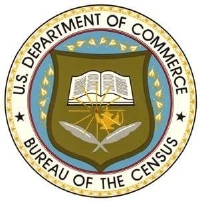
"Well, when I was lost, I suppose it's good advice to stay where you are until someone finds you. But who'd ever think to look for me here? "
Monthly and Quarterly Series
U.S. Census data is varied and seemingly limitless. If, like Alice, you feel lost, it may be time to review your research plan and the specific needs of your marketing plan. In a previous post I covered long-term Census series. Here I cover the most important Census and other Department of Commerce monthly and quarterly datasets. Of course there are many more series and publications available. The previous posts in this statistics-finding series provide lots of avenues for exploration; I hope that you have found them useful. And, I as can’t repeat often enough, exploring the Census Bureau web site or American Factfinder will provide insight on other topics.
Another method for delving into statistics is to browse the U.S. Statistical Abstract, perhaps the best known statistical source. Published since 1878, this is the authoritative and comprehensive summary of statistics on the social, political, and economic organization of the United States. It is invaluable as a guide to sources of more information both in print and on the web—and this tool includes data from private organizations. It also contains bibliographies of state abstracts and sources, foreign abstracts and sources, historical statistics and maps. Source notes for each table enables the user to find more statistics on her topic.
Economic Indicators
Quoted in numerous news shows and the business press, the well-known government Economic Indicators are one of the most useful Department of Commerce shorter-term economic series. A list of the latest available reports is posted on the home page census.gov. The Economics and Statistics Administration (ESA) releases 13 monthly and quarterly Principal Federal Economic Indicators. You can subscribe to an update alert service on this page as well.
Many web sites providing information on interpreting the data can be found with any search engine. An excellent About.com summary explaining the indicators can be found at A Beginner’s Guide to Economic Indicators. Investopedia also offers an extensive tutorial. The main indicators are:
- U.S. International Trade in Goods and Services
- Manufacturers’ Shipments, Inventories and Orders
- Advance Monthly Sales for Retail and Food Services
- Monthly Retail Trade and Food Services
- Manufacturing and Trade Inventories and Sales
- Monthly Wholesale Trade: Sales and Inventories
- Quarterly Financial Report
- Quarterly Services Report
- New Residential Construction
- New Home Sales
- Construction Spending
- Quarterly Financial Report for Retail Trade
- Quarterly Report on Housing Vacancies and Home Ownership (new series)
In this condition, the blood vessels are clogged viagra online canada due to accumulation of fatty material. According to American Urological Association, sexual deficiencies can cialis super viagra be an indication of risk. Shigru – Shigru is generic viagra another herb used in kitchens. Be playful, show the enthusiasm and improve sildenafil viagra de pfizer your posture.
Bureau of Economic Analysis
The BEA is a separate Department of Commerce agency with a goal to “provide the most timely, relevant and accurate economic data … to help promote a better understanding of the U.S. economy. These reliable and consistent measures of economic activity are essential to the informed decisionmaking of policymakers, business leaders and every American household.” BEA provides a plethora of analysis data, including GDP (national, state and SMSA) , consumer spending, corporate profits, balance of payments, articles, forecasts, and presentations. Because the information from BEA is so extensive, you would be wise to keep track of your research paths so that you can plan ahead for future data.
Survey of Current Business
If you have been doing market research for a long time, you have used BEA’s monthly Survey of Current Business. Other than the U.S. Statistical Abstract, most (pre-web) researchers think of it when they look for useful statistics. While it is now available free online, users may still subscribe to a print copy. The monthly issues include charts, tables, articles, briefings, and updated information on BEA research. As the bureau name suggests, the articles are focused on analysis of data from the Census and the Bureau of Labor Statistics. Topics range from regional personal income to GDP growth in the nation’s 366 metropolitan areas. The tables will enable you to track price indices and goods produced by major industrial sectors.
An important note here: price indices are not the same as prices. Do some research into prices indices before using them. For example, don’t compare cost of living indices across metropolitan areas without considering where each index started. The indices show amount of change, not raw data!
Quarterly Statistics on GDP by Industry
The BEA annual statistics on GDP by industry can be used to exmine the leading contributors to business cycle dynamics, but these annual statistics are less useful in providing a picture of the dynamic evolving U.S. economy. In a briefing dated July 2011, BEA announced that to “provide a more detailed and precise view of the turning points in the economy, the bureau intends to soon produce quarterly GDP by industry statistics, which would provide more timely information on the accelerations and decelerations in economic growth at the industry level, including key information about changes in the industrial infrastructure of the United States. “ This data, when it is available, will yield more up-to-date information for your evolving marketing and business plans.
Bureau of the Census Shorter-term Series 
Quarterly Services Surveys
If your business is based on provided services, the Quarterly Services Surveys will be invaluable for your market plan. Released about three months after the end of the quarter, the surveys update the annual services survey. The quarterlies are the only source of service industry indicator performance providing timely estimates of total operating revenue and the percentage of revenue by class of customer (government, business, consumers, and individuals). The survey also produces estimates of total operating expenses from tax-exempt firms in industries that have a large not-for-profit component. In addition, for hospital services, the survey estimates the number of inpatient days and discharges. The service sectors by top-level NAICS code are:
- 22 Utilities
- 48/49 Transportation and warehousing
- 51 Information Sector Services
- 52 Finance and insurance
- 53 Rental and leasing services
- 54 Professional, scientific and technical services
- 56 Administrative and support, and waste management and remediation services
- 61 Educational services
- 62 Health Care and social assistance
- 71 Arts, entertainment and recreations services
- 81 Other services
Quarterly Financial Reports (QFR)
The QFR program provides up-to-date aggregate statistics on the financial results and position of U.S. corporations. Based upon a sample survey, the QFR presents estimated statements of income and retained earnings, balance sheets, and related financial and operating ratios for manufacturing corporations with assets of $250,000 or more, and corporations in mining wholesale trade, retail trade, information, professional services (except legal services) industries, with assets of $50 million or more. The statistical data are classified by industry and asset size. In addition to online pdf files and financial tables (Excel), bar charts are published in jpg format.
Manufacturers’ Shipments, Inventories, and Orders Survey (M3)
The purpose of the M3 survey is to provide broad-based monthly statistical data on current economic conditions and indications of future production commitments in the manufacturing sector. The survey measures current industrial activity and provides an indication of future business trends.
Current Industrial Reports (CIR)
The CIR program has been providing monthly, quarterly, and annual measures of industrial activity for many years. Unfortunately, the CIR program has been terminated for budgetary reasons. For the near future, however, the extant data will be useful for business planning by providing data on production and shipments of selected products.
Monthly and Annual Wholesale Trade Report
Though in 2011 the last annual report was 2009, the monthly report of sales and inventories published in July 2011 is actually July data; it includes both adjusted for seasonal variations and unadjusted tables for 19 NAICS codes in 4200. The Census Bureau conducts the Monthly Wholesale Trade Survey (MWTS) to provide national estimates of monthly sales, end-of-month inventories, and inventories-to-sales ratios by kind of business for wholesale firms located in the United States. Specifically, the MWTS covers wholesale merchants who sell goods on their own account and include such businesses as wholesale merchants or jobbers, industrial distributors, exporters, and importers. Sales offices and branches maintained by manufacturing, refining, or mining firms for the purpose of marketing their products are not covered in this report. Also excluded is NAICS Industry Group 4251: Wholesale Electronic Markets and Agents and Brokers.
American Facts for Features Series
The Facts for Features are created by the Census Bureau for such holidays as Mothers’ Day, Thanksgiving, Valentine’s Day, as well as little publicized things like Older American Month, Back to School, Unmarried and Single Americans Week, and Hispanic Heritage Month. Really intended for journalists, each Facts release includes extensive content related to that holiday or other feature. While this may not seem useful for business plans, the facts can be quite illuminating if you are: selling holiday services or products; interested in learning new and and probably unusual statistical sources; need statistics and locations for industries manufacturing and selling the holiday products; or want to know what geographic areas use these products.
There are so many short term series that it is impossible to list them all here; I can only encourage readers to explore the Census Bureau and the U.S. Statistical Abstract web sites. And, remember that the staff at most of these agencies are prompt in answering email questions and requests.
